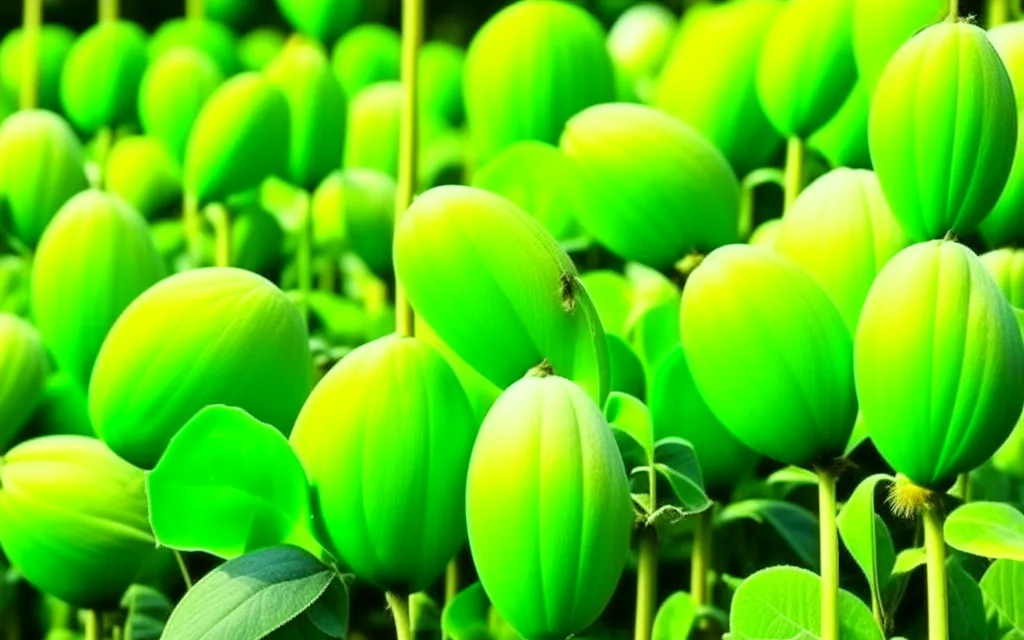
Growing Cowpeas: A Gardener’s Delight
Ah, Cowpeas! If you haven’t heard of them, let me introduce you to this wonderful legume. Cowpeas, also known as black-eyed peas, have a fascinating history and a place in various cuisines around the globe. These hardy plants are drought-tolerant and thrive in sandy soil, making them a favorite among gardeners and farmers alike. Plus, they’re incredibly versatile when it comes to growing methods. You can grow them vertically on trellises for a space-saving garden or let them sprawl on the ground—either way, you’re in for a treat!
Brief History of Cowpeas
Historically, Cowpeas originated in West Africa and were cherished by ancient civilizations as a staple food source. They spread throughout Africa and eventually made their way to the Southern United States, where they became a crucial ingredient in Southern cooking. Today, they’re celebrated not just for their delicious taste but also for their ability to enrich the soil through nitrogen fixation. Talk about a win-win!
Different Ways to Grow Cowpeas
Growing Cowpeas can be done in a few different ways. If you’ve got limited space, try vertical gardening. Just set up a trellis and watch those vines climb! Alternatively, if you have more room, planting them in rows or letting them spread out will yield plenty of beans. They come in several varieties—some popular ones include Black Eyed Peas, California Blackeye, and Purple Hull. Each has its unique taste and uses in the kitchen, so feel free to experiment!
The Joys of Companion Planting with Cowpeas
Now that we’ve got Cowpeas covered, let’s dive into the exciting world of companion planting. You may be wondering, “What are the benefits of companion planting for Cowpeas?” Well, planting Cowpeas alongside the right companions can dramatically enhance their growth, health, and flavor. It’s like having a garden party where everyone gets along!
Good Companion Plants for Cowpeas
Plants to Avoid
It’s equally important to know what to avoid when planting Cowpeas. Onions and garlic can be detrimental companions. Their strong allium scent can hinder the growth of Cowpeas and cause some serious flavor conflict in your garden. Make sure to keep these plants at least 3 feet away from your Cowpeas, Corn, and Squash. Ideally, place them in a different section of the garden to ensure a harmonious growing environment.
In Summary
By growing Cowpeas alongside friendly companions like Corn and Squash, and steering clear of plants like Onions and Garlic, you’ll be setting yourself up for a bountiful harvest. Cowpeas are as enjoyable to grow as they are to eat, not to mention how they positively impact soil health. So, grab that shovel and get your hands dirty—it’s time to cultivate some Cowpeas!
Companion Planting with Cowpeas: Spacing Guidelines
Hey there, fellow garden enthusiast! If you’re looking to maximize your garden’s productivity and create a wonderful ecosystem, companion planting is the way to go. Today, I’m excited to share specific spacing recommendations for planting Cowpeas alongside various companion plants. Let’s dig into it!
General Spacing Rule
For general spacing, you’re looking at about 12 to 18 inches between Cowpeas and major plants like Corn and Squash. Cowpeas have a relatively relaxed growth habit, so they can comfortably share space without stepping on each other’s toes.
Guidelines for Tall Companions
If you’re considering planting tall companions, such as Corn or Sorghum, you’ll want to give them some room to stretch. A distance of 18 to 24 inches apart is ideal. This spacing helps prevent the taller plants from overshadowing the Cowpeas while still benefiting from the shade they provide on hot days.
Tip: If you’re in a particularly windy area, tall plants can serve as a windbreak for the Cowpeas, so don’t hesitate to plant them close up!
Guidelines for Low-Growing Companions
Low-growing companions like Radishes or Beets can snuggle up to the Cowpeas at a spacing of 6 to 12 inches. They won’t compete much for light, making them great partners.
Feel free to take advantage of this space to sow seeds directly in between the Cowpeas’ rows.
Guidelines for Strongly Aromatic Companions
Plants with strong aromas, such as Basil or Marigolds, should be placed about 12 to 18 inches away from your Cowpeas. Their scents can repel certain pests, which is a huge bonus!
Plus, these aromatic companions add a lovely fragrance to the garden, making your outdoor space even more enjoyable.
Guidelines for Nutrient-Heavy Feeders
Nutrient-heavy feeders like Tomatoes or Peppers will do best when spaced 18 to 24 inches from Cowpeas. Ensure they’ve got enough soil nutrients, as both groups tend to have hearty appetites.
Tip: Monitor soil health closely and consider rotating these crops each season.
Guidelines for Spreading or Vining Companions
For vining companions, such as Cucumbers or Pumpkins, a spacing of 3 feet or more may be necessary to give everyone enough room to sprawl. These vigorous growers can easily overshadow Cowpeas, so plan accordingly!
Adjusting for Garden Conditions
Remember, these are general guidelines. I always recommend adjusting based on your specific garden conditions, such as soil quality, sunlight, and the mature sizes of your plants. Every garden is a little different, and that’s part of the magic!
Companion Plant Summaries
Corn
Corn is a fantastic companion because it provides vertical growth, helping support trailing plants like Cowpeas. Besides Cowpeas, Corn does well alongside Beans (which they can fix nitrogen in the soil) and Squash. These plants make up the “Three Sisters” planting technique, enhancing growth and pest resistance.
Squash
Squash is another excellent companion that benefits from the nitrogen-fixing abilities of Cowpeas. They share the garden nicely, each respecting the other’s space. Additionally, Squash pairs well with Cucumbers and Radishes, creating a diverse and productive garden bed.
So there you have it! I hope these guidelines help you create a bountiful companion planting arrangement with your Cowpeas. Happy gardening, and don’t forget to share your successes over that neighborly fence — I can’t wait to hear about your lush harvest!

Leave a Reply